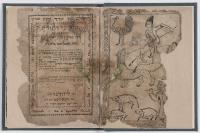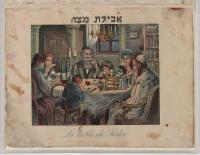Preserving the Past
From the first assessment of the wet and moldy books and documents in Baghdad, the National Archives and its partners worked to ensure the preservation and accessibility of the damaged books and documents found in the flooded basement of Saddam Hussein’s intelligence headquarters. The project provided opportunities for collaboration with the Center for Jewish History, the Government of the Republic of Iraq, the National Endowment for the Humanities, the United States Department of State, and the World Organization of Jews from Iraq as well as the American Jewish Committee, B’nai B’rith, and others. It serves as a model for international cultural heritage collaborations. Through cataloging, conservation, digitization, and posting online, these books and documents will be accessible throughout the world to all who are interested.
Discovering and Documenting
After the vacuum freeze-drying process, the conservation team unpacked the trunks and assessed the condition of the books and documents. As each item was uncovered, experts cataloged and created a web-based database inventory. Bibliographic research provided identification and description information for the database. However in many cases, title pages and other key information were missing, which required further research to provide the most accurate description possible.
Working as a Team
Throughout the project, team members collaborated on numerous decisions to provide effective, safe, and efficient care and access to the collection. Members of the National Archives project staff evaluated the format and physical condition of each item to determine the protocol for treatment that would enable successful digital imaging. Subject-matter experts provided guidance on the overall project as well as on individual items.
Treating the Damages of the Past
Conservation treatment stabilized materials for cataloging, imaging, and exhibition. Inactive mold was removed by careful vacuuming, making it possible to handle the original materials and enhance the cataloguing information. Water-damaged pages were carefully separated. Major tears and losses in paper were mended to prevent further damage during handling. The often dramatic improvements revived books and documents that had seemed lost.
Imaging for the Future
Staff digitized the items using state-of-the-art camera equipment designed specifically for imaging cultural heritage materials. For each document or book page imaged, they created a high-resolution file that served as a master file, from which they later created the multipage PDF files for public access on the website. Specialists provided quality assurance for the images, carefully comparing the object to the photograph.
Custom Housing
Staff re-housed the collection in preservation-quality boxes and folders suitable for permanent storage and access. The computerized box-making equipment sensed and captured measurements digitally. Once the box board was cut and creased to the exact dimensions, each book was placed in its custom box and labeled in English and Arabic, and/or Hebrew.
See More Documents and Books
Through the careful work of preservation and conservation professionals, archivists, librarians, digital imaging experts, and scholars, the Iraqi Jewish materials are now preserved. A list of the books and documents found in the basement of Saddam Hussein’s intelligence headquarters is being made available online, along with digital images of the documents and many books and additional information about the preservation process.
Preservation: the Survival of Iraqi Jewish Heritage
Iraqi Jewish life continues as a vibrant tradition in Iraqi Jewish communities worldwide. Rituals, language, recipes, songs, and literature flourish in synagogues, homes, and communal organizations. The carefully preserved books and documents discovered in the Iraqi intelligence headquarters in 2003 also help continue the heritage of Iraqi Jewry. Today, the 21st-century diaspora of Iraqi Jewry has a vitality and global impact reaching far beyond the “rivers of Babylon.”
This exhibition was created by the National Archives and Records Administration, Washington, DC, with support from the Department of State.








